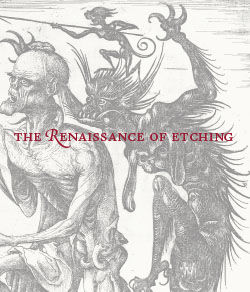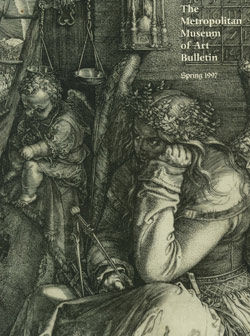The Entrance Hall of the Regensburg Synagogue
Albrecht Altdorfer German
Not on view
In the muted light of an open doorway and a rosette window, two Jewish men are shown walking through the entry porch of the Regensburg synagogue. Altdorfer made two etchings of the temple just before it was destroyed on February 22, 1519: this view and one of the interior nave. Emperor Maximilian had long been a protector of the Jews in the imperial cities, extracting from them substantial taxes in exchange. Within weeks of his death, however, the city of Regensburg, which blamed its economic troubles on its prosperous Jewish community, expelled the Jews. Altdorfer, a member of the Outer Council, was one of those chosen to inform the Jews that they had two hours to empty out the synagogue and five days to leave the city. The date of the demolition inscribed at the top of the print suggests that Altdorfer made the preparatory sketches, as well as the etchings themselves, with the knowledge that the building was to be destroyed. The prints appear to have been quickly produced, quite possibly during the five days prior to the temple's destruction: the plate was not evenly etched, particularly in the areas of dense hatching, where the individual lines lose clarity. In addition, the slightly tipsy vaults appear to have been traced freehand rather than with a compass. Despite the seemingly sensitive portrayal, the print was not intended as a sympathetic rendering of an aspect of Jewish culture, but rather as a much more dispassionate recording of the site. It is thus the first portrait of an actual architectural monument in European printmaking.
Due to rights restrictions, this image cannot be enlarged, viewed at full screen, or downloaded.




